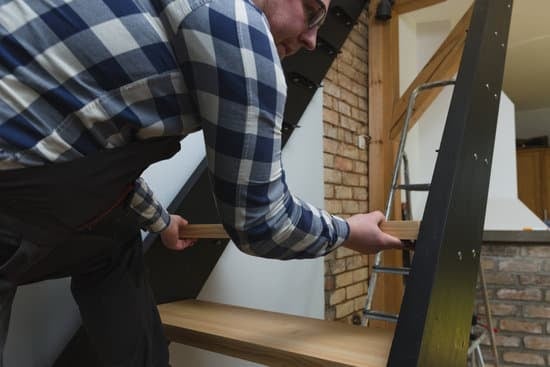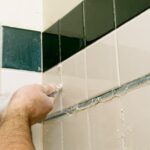Are you a homeowner looking to maximize your tax savings? Understanding how to deduct home improvements on Turbotax can be a game-changer. By claiming deductions for eligible home improvements, you can potentially decrease your tax liability and save more money each year. In this article, we will explore the significance of claiming deductions for home improvements on Turbotax and highlight the potential tax savings and benefits for homeowners.
When it comes to taxes, every dollar saved counts. Deducting home improvements on Turbotax is an excellent strategy that can help you keep more money in your pocket. Whether you’re making energy-efficient renovations or creating a home office space, understanding what qualifies as a home improvement for tax deductions is essential.
Not only can deducting home improvements reduce your taxable income, but it can also provide numerous other tax benefits. From credits for energy-efficient improvements to deductions for medical purposes or home office expenses, there are various ways homeowners can benefit from these deductions. Throughout this article, we will explore the different tax benefits associated with claiming home improvement deductions and how they can help you save even more.
So if you’re ready to take advantage of those possible tax savings and benefits, stay tuned. We will guide you through the process of deducting home improvements on Turbotax, providing step-by-step instructions on navigating the platform and maximizing your deductions accurately. With our comprehensive information and expert tips, you’ll be well-equipped to make the most of your eligible expenses and ensure proper documentation for successful deduction claims.
What Qualifies as a Home Improvement for Tax Deductions?
When it comes to deducting home improvements on Turbotax, it is crucial to understand what qualifies as a home improvement. Not all expenses related to your home will be eligible for deductions, so it’s important to know the criteria that must be met.
A comprehensive definition of home improvements that are eligible for tax deductions includes any enhancements made to your home that add value or prolong its useful life. These improvements go beyond basic repairs or maintenance and typically involve upgrading or enhancing a specific area or aspect of your property.
It’s important to note the difference between repairs, upgrades, and improvements when determining what qualifies for tax deductions. Repairs are generally considered necessary fixes to restore the property to its original condition and are not eligible for deductions. Upgrades often involve replacing an item with a better version but do not necessarily add value to the property itself. On the other hand, improvements raise the value of your property and can be deducted on Turbotax.
Examples of eligible home improvements that may qualify for tax deductions include installing energy-efficient systems such as solar panels, upgrading insulation, adding a home office space, renovating kitchens or bathrooms, building an addition to your existing structure, or even landscaping projects that improve the aesthetics and functionality of your outdoor space.
To ensure you’re correctly deducting these expenses on Turbotax, have proper documentation such as receipts, invoices, and contracts readily available. This serves as proof of expenses and validates your eligibility for deductions. By accurately categorizing your home improvement expenses within Turbotax and providing the necessary details like dates of completion and costs incurred, you can maximize your deductions effectively.
Remember that while understanding what qualifies as a home improvement is important in claiming tax deductions on Turbotax, it’s always advisable to consult with a tax professional or utilize any resources provided by Turbotax specific to this topic. Being well-informed will help you navigate the process smoothly and ensure you’re taking full advantage of the potential tax savings and benefits available to homeowners.
Understanding the Tax Benefits of Deducting Home Improvements
When it comes to home improvements, many homeowners may not be aware of the potential tax benefits that can be claimed through deductions. Understanding these tax benefits is crucial for maximizing savings and reducing tax liability. By taking advantage of the deductions available, homeowners can potentially save significant amounts of money on their taxes.
One key tax benefit of deducting home improvements is the potential for credits and incentives. For example, homeowners who make energy-efficient improvements to their homes may be eligible for the Residential Energy Efficient Property Credit. This credit allows homeowners to claim up to 30% of the cost of qualifying energy-efficient improvements, such as solar panels or energy-efficient windows.
In addition to credits, there are also deductions available for certain types of home improvements. For example, homeowners who have a home office may be eligible to deduct expenses related to that space. This includes expenses such as utilities, repairs, and maintenance specifically related to the home office. It’s important to keep detailed records and receipts for these expenses in order to accurately claim the deduction.
To assist you in understanding and maximizing these tax benefits, TurboTax provides a user-friendly platform that guides you through the process step by step. The software ensures that you don’t miss out on any potential deductions by asking relevant questions about your home improvements and walking you through entering the necessary information accurately.
Taking advantage of these tax benefits not only helps reduce your current tax liability but also increases your overall savings over time. Investing in your home through improvements not only enhances its value but can also lead to long-term financial gains. By understanding and leveraging the tax benefits available for home improvements on platforms like TurboTax, homeowners can make informed decisions and maximize their savings.
| Tax Benefit | Details |
|---|---|
| Residential Energy Efficient Property Credit | Allows homeowners to claim up to 30% of the cost of qualifying energy-efficient improvements, such as solar panels or energy-efficient windows. |
| Home Office Deduction | Eligible homeowners can deduct expenses related to a home office, including utilities, repairs, and maintenance specifically related to the space. |
Gathering the Required Documents and Information
To successfully claim home improvement deductions on Turbotax, it is imperative to gather all the necessary documents and information. Failing to provide proper documentation can result in deductions being disallowed or even trigger an audit. This section will provide a detailed checklist of the documents required and offer tips for organizing and storing them effectively.
- Receipts: Keep a record of all receipts related to your home improvements, including materials, supplies, and equipment purchased. These receipts serve as proof of expenses and are essential when claiming deductions. Make sure the receipts clearly state the date, description of the item or service, cost, and name/address of the vendor.
- Invoices/Contracts: If you hired contractors or professionals for your home improvement projects, make sure to obtain copies of all invoices and contracts. These documents should include details such as the scope of work, cost breakdown, dates of service, and contact information for the service provider.
- Permits: If your home improvement projects required permits from local authorities, be sure to keep copies of these permits. They may be needed to validate the legitimacy and eligibility of your deductions.
- Before-and-After Photos: Taking before-and-after photos not only helps you track the progress of your home improvements but also serves as visual evidence when claiming deductions. Ensure that the photos clearly depict the condition of your property before and after each improvement.
- Financing Documentation: If you financed any part of your home improvement projects through a loan or line of credit, retain documentation regarding these financial transactions. This may include loan agreements, statements, or forms showing interest paid.
- Product Specifications/Documentation: For specific improvements such as energy-efficient upgrades (e.g., solar panels), it is crucial to keep product specifications or manufacturer documentation showcasing their energy-efficient features or certifications.
| Documents | Description |
|---|---|
| Receipts | Proof of expenses for materials, supplies, and equipment purchased |
| Invoices/Contracts | Details of services provided by contractors or professionals |
| Permits | Copies of permits obtained for the home improvement projects |
| Before-and-After Photos | Visual evidence showcasing the condition of the property before and after improvements. |
| Financing Documentation | Documents regarding loans or lines of credit used to finance home improvements. |
| Product Specifications/Documentation | Specifications or certifications for energy-efficient upgrades. |
Having these documents readily available when filing your taxes on Turbotax will streamline the process and ensure accuracy. Keep these records organized and easily accessible throughout the year to avoid any last-minute scrambling. Remember, proper documentation is crucial to maximize your deductions while minimizing the risk of facing an audit.
How to Navigate the Turbotax Platform for Home Improvement Deductions
Navigating the Turbotax platform to claim deductions for home improvements is a straightforward process that can save homeowners a significant amount of money. Turbotax provides users with a user-friendly interface and step-by-step guidance to help them accurately report their eligible home improvement expenses. Here is a step-by-step guide on how to navigate the Turbotax platform for home improvement deductions:
- Accessing the Relevant Sections: Once you have logged into your Turbotax account, select the section labeled “Deductions & Credits.” Within this section, you will find a category called “Your Home.” Click on this category to proceed.
- Identifying Home Improvements: In the “Your Home” section, you will be asked if you made any improvements to your home during the tax year. Select “Yes” if you made any eligible improvements that qualify for deductions.
- Entering Information: Next, enter all relevant information about your home improvement expenses, including the date of each improvement, a brief description of the work done, and the total cost incurred for each project. Make sure to keep accurate records and receipts for these expenses as they may be required for documentation purposes.
- Maximizing Deductions: Turbotax will guide you through various prompts and questions specific to your home improvement projects to identify additional deductions or credits you may be eligible for. These may include energy-efficient improvements, medical purposes, or home office expenses.
- Reviewing and Submitting: Once you have entered all necessary information, carefully review all the details provided before submitting your tax return on Turbotax. Be sure to double-check all amounts entered and make any necessary adjustments or corrections.
By following these steps within the Turbotax platform, homeowners can ensure they are accurately reporting their home improvement expenses and maximizing their deductions effectively.
Additionally, it is important to note that Turbotax provides users with helpful resources and support throughout the process, including live chat support and a comprehensive knowledge base. If you encounter any difficulties or have specific questions related to your home improvement deductions, Turbotax experts are available to assist you.
Common Mistakes to Avoid When Claiming Home Improvement Deductions on Turbotax
Failing to Understand the Eligibility Criteria
One of the common mistakes homeowners make when claiming home improvement deductions on Turbotax is not fully understanding the eligibility criteria. It is essential to distinguish between repairs, upgrades, and improvements to ensure that only qualified expenses are claimed. Repairs generally maintain the property’s existing condition, while upgrades and improvements add value or prolong the life of the property.
To avoid this mistake, homeowners should familiarize themselves with the IRS guidelines on eligible home improvements for deductions. Additionally, seeking advice from tax professionals or utilizing resources provided by Turbotax can help clarify any confusion regarding eligibility.
Neglecting Proper Documentation
Another frequent error when claiming home improvement deductions is failing to retain proper documentation. Without adequate proof of expenses, homeowners may face challenges if their deductions are audited by the IRS. It is crucial to save receipts, invoices, and contracts as evidence of payment and verify that these documents clearly indicate the nature of the improvement.
To prevent this mistake, homeowners should establish an organized system of storing and categorizing receipts and other relevant documents related to home improvements. Digital storage solutions or physical files specifically dedicated to these records can help streamline this process.
Overestimating Deduction Amounts
Overestimating deduction amounts is a pitfall that many taxpayers fall into when claiming home improvement deductions on Turbotax. It is important for homeowners to accurately calculate deductible amounts based on their actual expenses rather than applying estimations or assumptions.
To avoid this mistake, homeowners should carefully review all expenses related to eligible home improvements and consult IRS publications or tax professionals for guidance on calculating deductible amounts accurately. Utilizing precise figures will not only prevent overestimation but also potentially maximize deductible amounts for overall tax savings.
By being aware of these common mistakes and taking proactive steps to avoid them, homeowners can increase their chances of successfully claiming home improvement deductions on Turbotax. Remember that accurate and well-documented claims can lead to significant tax savings and benefits, so it is crucial to approach the process with diligence and careful attention to detail.
Frequently Asked Questions and Expert Tips
Can I claim deductions for home improvements if I rent my property?
If you are a homeowner and also rent out your property, you may be wondering if you can claim deductions for home improvements on Turbotax. The answer is yes, but with some limitations. Generally, you can only deduct expenses related to the portion of the property that is exclusively used for rental purposes.
This means that if you have a home office or a separate unit that is rented out, you may be able to claim deductions for the improvements made to those areas. However, improvements made to common areas or non-rental parts of the property would not qualify.
It’s important to note that claiming deductions for rental properties can be complex, so it’s recommended to consult with a tax professional or refer to Turbotax’s resources specifically tailored for rental property owners.
Can I deduct expenses from DIY home improvement projects?
Homeowners who enjoy taking on do-it-yourself (DIY) projects may wonder if they can deduct expenses related to these types of improvements on their taxes. The general rule is that labor costs cannot be deducted if homeowners contribute their own time and effort instead of hiring professionals. However, material costs used in DIY projects may still be eligible for deduction.
For example, if you built a deck using materials purchased from a retailer and did all the work yourself, you could potentially deduct the cost of those materials as long as they meet the criteria for eligible home improvement deductions. It’s crucial to keep detailed records and receipts of all expenses related to DIY projects in order to substantiate your deduction claims.
Can I claim deductions for home improvements completed in previous years?
If you made qualifying home improvements in previous years but did not claim deductions at the time, don’t worry – it may still be possible to claim them now. You can typically deduct the expenses of home improvements in the year they were completed. However, if you did not claim the deduction in that year, you can go back and amend your tax return for up to three years to include these deductions.
To amend a previous year’s return, you will need to file an amended return using Form 1040X. It’s important to keep in mind that there is a statute of limitations for claiming refunds, so it’s best to consult with a tax professional or refer to Turbotax’s guidelines on amending tax returns for further assistance.
By understanding these frequently asked questions and gaining insight from expert tips, homeowners can confidently navigate the process of deducting home improvements on Turbotax and maximize their potential savings. Remember to consult with a tax professional or utilize Turbotax’s resources for personalized guidance based on your specific situation.
Closing Thoughts
In conclusion, understanding and taking advantage of home improvement deductions on Turbotax can yield significant financial benefits for homeowners. By properly claiming these deductions, homeowners have the potential to save a substantial amount of money on their taxes. Whether it’s through energy-efficient improvements, medical modifications, or home office expenses, there are various ways for homeowners to reduce their tax burden.
One of the key takeaways from this article is the importance of gathering and organizing the necessary documents to support deduction claims. It is crucial to retain accurate receipts, invoices, and contracts as proof of expenses. This documentation not only serves as evidence for the IRS but also ensures that homeowners can maximize their deductions and minimize the risk of audits or disallowed deductions.
Furthermore, utilizing Turbotax as a platform to navigate and claim home improvement deductions can be highly advantageous. With step-by-step guidance and user-friendly features, Turbotax simplifies the process and helps homeowners accurately enter the necessary information. By following the instructions provided in this article and leveraging the resources available within Turbotax, homeowners can streamline their deduction claims and optimize their savings.
Frequently Asked Questions
Can I deduct home improvements on TurboTax?
The ability to deduct home improvements on TurboTax depends on the nature of the improvement and your specific tax situation. In general, most home improvements cannot be directly deducted on TurboTax as they are considered personal expenses. However, there are certain home improvements that may be eligible for tax deductions if they qualify as medical or business expenses.
For example, if you make modifications to your home in order to accommodate a disability or medical condition, you may be able to claim some of those expenses as medical deductions. It is always advisable to consult with a tax professional or use TurboTax’s guidance specifically tailored to your circumstances to determine if any of your home improvement expenses can be deducted.
Is there a way to write off home improvements?
Yes, there are ways to write off home improvements, although it depends on different factors. Generally, most home improvements cannot be directly written off as they are usually considered personal expenses rather than deductible items. However, certain types of home improvements may qualify for tax deductions under specific circumstances.
For instance, if you operate a improvement-job/” target=”_blank” rel=”follow noopener”>business out of your home and make improvements that exclusively benefit the business space (such as adding a separate office), these costs may be deductible as business expenses. Additionally, some energy-efficient upgrades made during the tax year like solar panels or installation of energy-saving appliances might qualify for residential energy credits or incentives offered by federal or state governments.
What home improvements are tax deductible IRS?
The IRS has specific guidelines regarding which home improvements can be tax deductible. While most ordinary repairs and maintenance do not qualify for deductions, there are a few exceptions where certain improvements become eligible for deductions under specific circumstances. The IRS allows deductions for qualifying medical expenses related to improving accessibility and assisting individuals with disabilities.
For example, constructing ramps or modifying doorways for wheelchair access may qualify for deductions if they are deemed medically necessary by a healthcare provider. Additionally, certain residential energy-efficient upgrades such as solar panels, geothermal heat pumps, or energy-saving insulation can also qualify for various tax credits and deductions. It is important to review IRS guidelines or consult a tax professional to determine the specific home improvements that may be tax deductible in your situation.

I’m thrilled to have you here as a part of the Remodeling Top community. This is where my journey as an architect and remodeling enthusiast intersects with your passion for transforming houses into dream homes.





